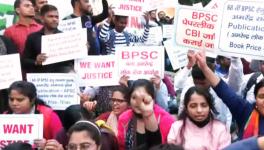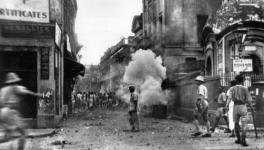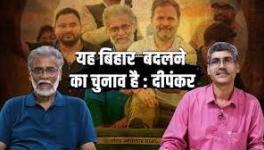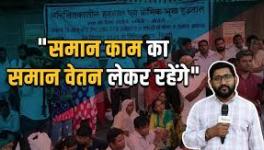Why Harry Doesn’t Mind if the Poor Don’t Make it to Bihar
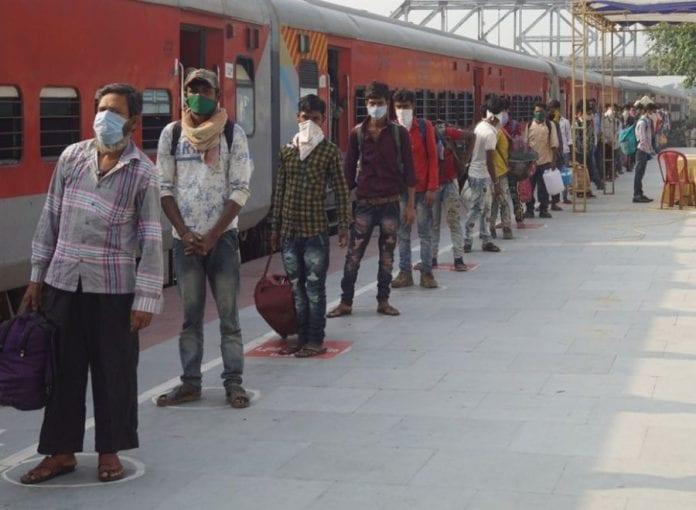
Image Used for Representational Purpose Only
In 2004, Congress leader and former Delhi Police Commissioner Nikhil Kumar spoke to The Times of India on what upwardly mobile Biharis residing out of the state, or non-resident Biharis, could do to uplift their land of origin, which is the poorest among all states by per capita GDP. Kumar suggested, “A one-time donation on a solitary project here and there won’t suffice. But if NRBs [non-resident Biharis] band together, the change can be significant.”
Forget non-resident Biharis banding together to economically transform Bihar. They could not even come together to provide succour to Bihari migrant labourers trekking hundreds of miles to reach home, in the summer heat, hungry and without money, beaten by police responsible for implementing the national lockdown, imposed to check community transmission of the Novel Coronavirus.
This dismal picture is not from a faraway place but Delhi, where Biharis dominate the bureaucracy, academia and myriad professions, including media. Their indifference to the plight of Bihari labourers belies the claim made by writer Amitava Kumar, in the aforementioned ToI story: “You can take the boy out of Bihar, but you cannot take Bihar out of the boy.”
Bihar remains integral to the imagination of its migrant labourers, evident from their rush home to escape hunger and Covid-19, the illness caused by the Novel Coronavirus. By contrast, Bihar merely constitutes the memory of non-resident Biharis, powerful and prosperous, who consider Delhi their home and where they will retire and die.
Separating these two groups of Biharis is the chasm of class, culture and history.
Non-resident Biharis as a category became visible and dominant in Delhi from the late 1970s. They came here for college studies and never returned home. They were, in this regard, different from the earlier generation of Biharis who were educated outside the state, but remained rooted there, often physically, almost always mentally.
In a 1998 article for the Economic and Political Weekly, Arvind N Das, the late journalist, listed three such luminaries from Bihar—Rajendra Prasad, who performed spectacularly at Calcutta’s Presidency College; Jagjivan Ram, who endured caste humiliation at the Banaras Hindu University; and Jayaprakash Narayan, who went to the United States and returned a socialist. They represented the broader socio-cultural trend, although there was never, in their era, a rush out of Bihar for college and university education.
This began to change during the late 1970s and the 1980s: Biharis began to come down to Delhi, in droves, for higher education, largely because the movement against the Emergency had disrupted Bihar’s college education system. There also emerged, in the 1980s, what Das calls “academic mafia”, which established a string of educational institutes. These enabled political-educational entrepreneurs to amass wealth in exchange for students passing time and still acquiring coveted degrees.
With options both in the public and private education sectors appearing bleak, Biharis made a beeline for Delhi.
Among them were a few who were educated in missionary schools and could hold their own, as far as speaking English and the culture associated with it went, against students from, say, the Doon School and Mayo College. They were largely the children of those who were employed in the higher echelons of bureaucracy, were landed or belonged to the erstwhile zamindari class, or were business and professional elites. Coming to Delhi for an education was a rite of passage for them.
But a large number of Bihari education-seekers did not have the English-speaking background. They were contemptuously dubbed as Harry, a term depicting their quests as those of wannabes, even though some of them were the brightest around. They were mocked for being oblivious of what went as cosmopolitan culture; their Bihari-ness a butt of many jokes. Their rising numbers stigmatised even the missionary school students from the state. Every student from Bihar was now a Harry, a nomenclature signifying backwardness and parochialism.
Cultural confusion engulfed the Harrys, at least subliminally, prompting many to attenuate or altogether abandon their Bihari-ness, embrace the cosmopolitan identity and try to fit in. There was also an attempt by some to assert their Bihari-ness, to be an unapologetic Bihari, so to speak. Even this effort pointed to the scarring impact that the conflict of identity could have on a person’s personality.
Other factors, too, facilitated the distancing of Biharis from their provincial identity. For one, the Bihari identity did not emerge out of a struggle of the kind waged by linguistic communities in south India. Bihar was hived out of Bengal in 1911-12 and then, on 1 April 1936, Odisha was separated from Bihar. For the other, the Bihari linguistic personality could easily be subsumed by the larger Hindi identity, regardless of the vibrancy of many dialects there.
The sheer malleability of Bihar’s regional and linguistic identity implied that a Harry could opt for a cultural makeover quite easily. It paid to do so. The adoption of cosmopolitan culture, masked by English and Hindi, distanced the Harrys from the notion of backwardness and provincialism, although the Bihari elite network could always be relied upon to boost careers or get work done.
This cultural masking brought about a disjunction between the Harrys and the hoi polloi. Das, in his essay, points out that the outflow of Bihari labourers to west Uttar Pradesh, where they worked hard at exploitative wages to usher in the Green Revolution, never agitated the Bihari intelligentsia.
Instead of debating the consequences of the “brawn drain” from Bihar, the intelligentsia focussed on the implications of the “brain drain”, signified by those very Harrys who had gone out of the state to study, wrestled with their internal cultural demons and, ultimately, settled down in, say, Delhi and its satellite cities of Gurgaon and NOIDA. A good many migrated out of India. They have a presence in foreign universities, the IT, healthcare and engineering sectors.
The Harrys decided to permanently drop anchor in Delhi also, possibly because of the rise of Lalu Prasad Yadav and the Other Backward Classes. Abductions for ransom had a class-caste edge—the victims belonged to the social group of Harrys, their anxieties heightened because of the powerful narrative that Bihar had become a lawless state courtesy Yadav. The Harrys concluded that it was better to remain out of a backward, socially fraught Bihar, just the kind of conclusion that the NRIs reach about their country before settling abroad.
Yet even NRIs respond to crises in India, although, at times, confining their role to criticising the state’s role in fanning caste and religious conflicts, as has been increasingly the case in recent years. But not so the Harrys, who did not band together to become a pressure lobby for mitigating the suffering of fellow Biharis.
This failing has a lot to do with the Hindi-English identity that the Harrys adopted. In Delhi and its surroundings, they do not feel they are a minority, as for instance Malayalis do. Yet the same Hindi identity has had the Harrys bond together during the lockdown in south India, where they are a minority group.
Take Seemant Kumar Singh, the Inspector General of Police (Administration), Bengaluru. Through a network stretching all the way back to Bihar, one among a group of 450 Bihari migrant labourers stranded in Bengaluru contacted Singh for food. He organised ration for all of them. His phone number soon became a port of call for residents of Bihar, Jharkhand and Odisha, all these constituting a composite state around 85 years ago.
Singh has been credited with organising dry ration packets for 60,000 migrant labourers since 31 March. Multinational companies and the local populace have pitched in to make his efforts a rousing success. Yet the initial impulse to provide relief to migrant labourers came from the Harrys working in Bengaluru’s IT sector. A 14-year-old girl from Uttar Pradesh, living in a gated neighbourhood, collects money from its inhabitants to provide daily dry ration packets for distribution among the migrant labourers.
This story from Bengaluru should shame Delhi’s Harrys who, for all their power and wealth, failed to come to the assistance of the Bihari hoi polloi.
“But Harry as a cultural entity is undergoing a redefinition,” said a young Bihari civil officer who graduated from an engineering college outside the Hindi heartland and encountered the slight of being a Harry. The new trend among the Harrys, he said, is to now identify themselves with Maithili or Magahi sub-regional cultural identities.
“On the one hand, the subregional cultural identities distinguish us from the Bihari-Bhojpuri culture, which is looked down upon. On the other, it establishes us as a separate group from those coming from other Hindi-speaking States,” the young officer said.
In his 1998 essay, Das had warned, “If Bihar does not change, it will change India into its own image.” That has not happened. But India and Delhi have changed the Harrys, who are, in the manner of the Indian elite class, impervious to the tribulations of the poor and lack the courage to point to their political masters their inexcusable follies. Harry has a different fish to fry, than to bother about the poor making it to Bihar.
The author is a freelance journalist. The views are personal.
Get the latest reports & analysis with people's perspective on Protests, movements & deep analytical videos, discussions of the current affairs in your Telegram app. Subscribe to NewsClick's Telegram channel & get Real-Time updates on stories, as they get published on our website.









